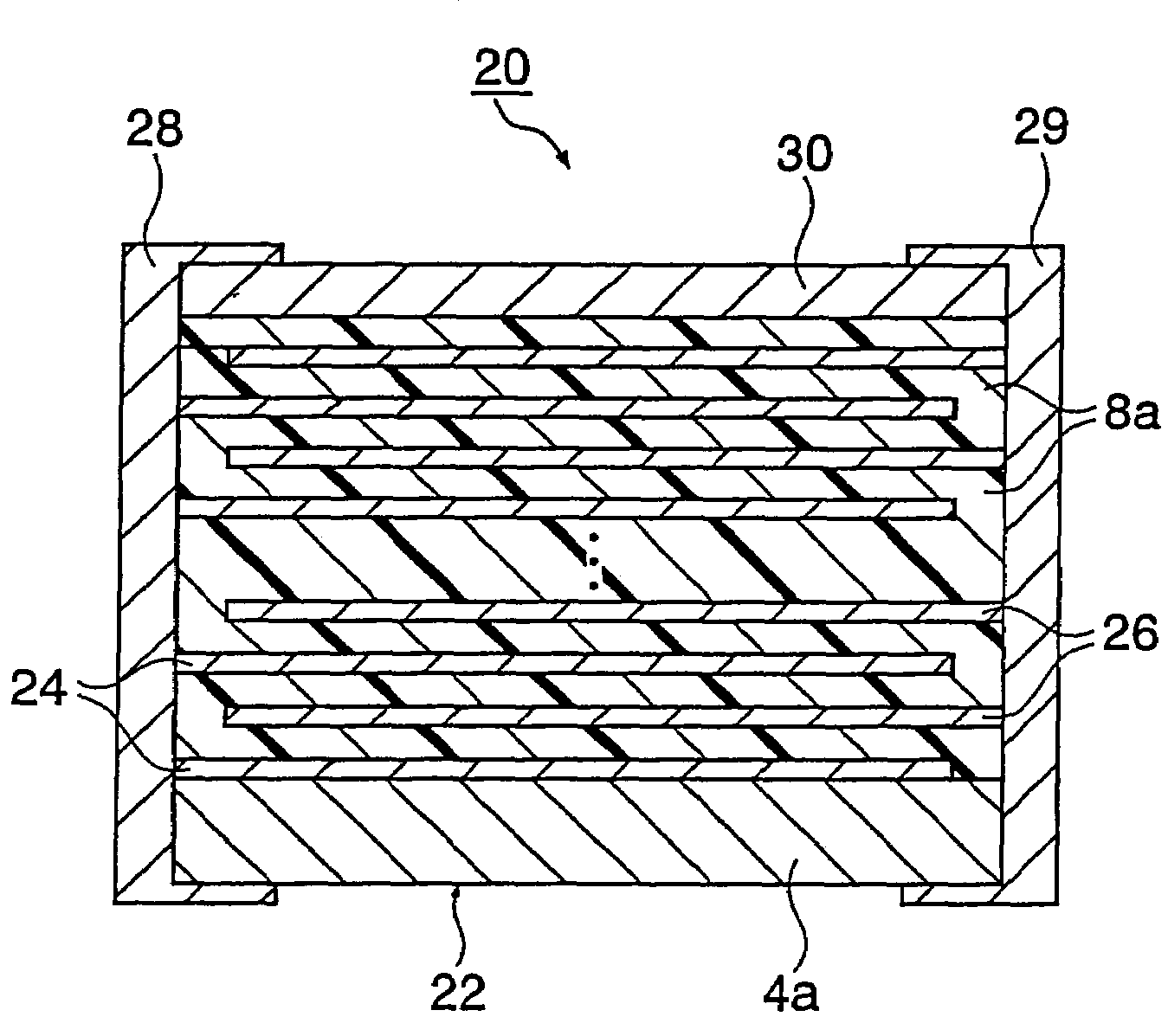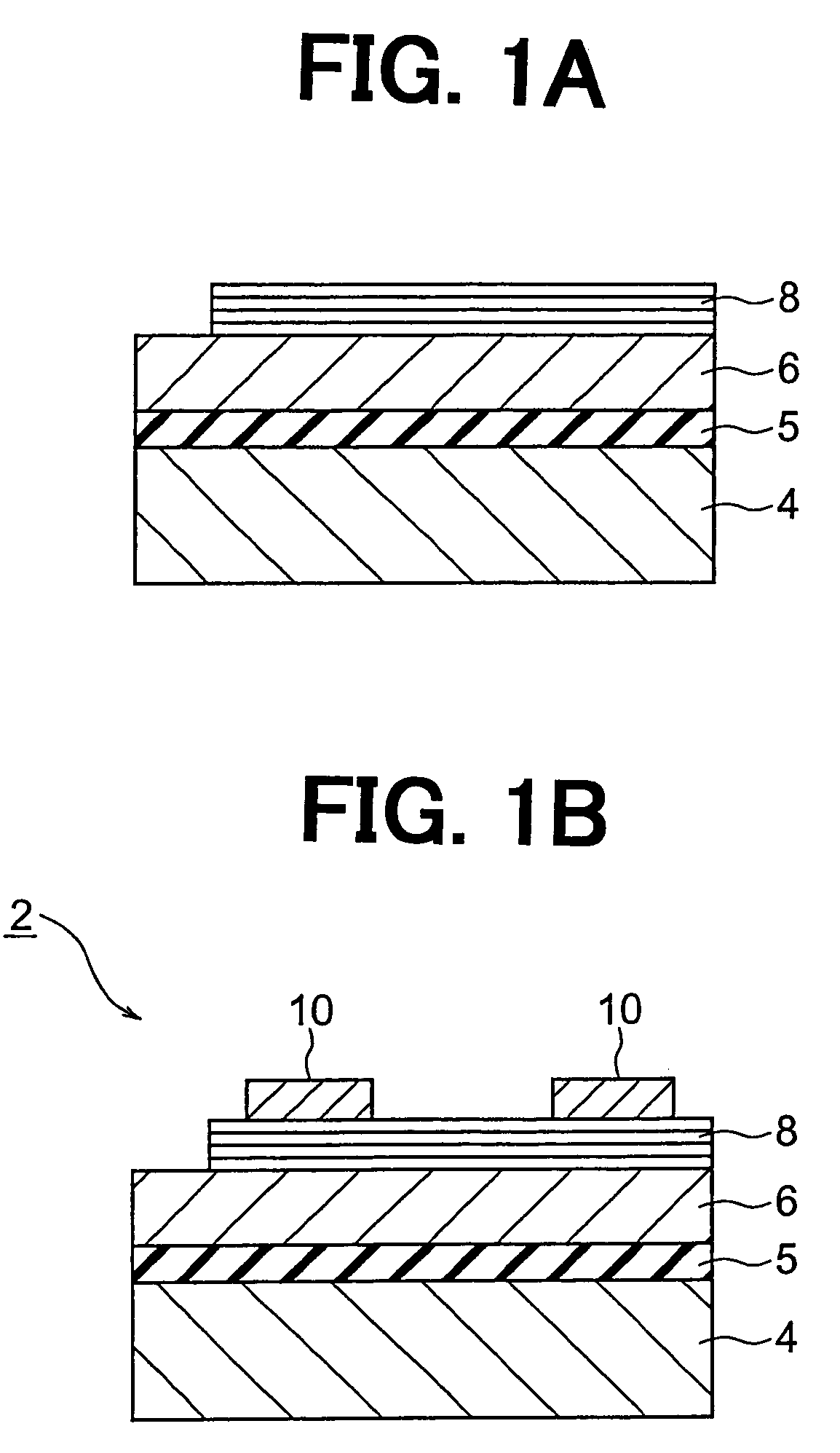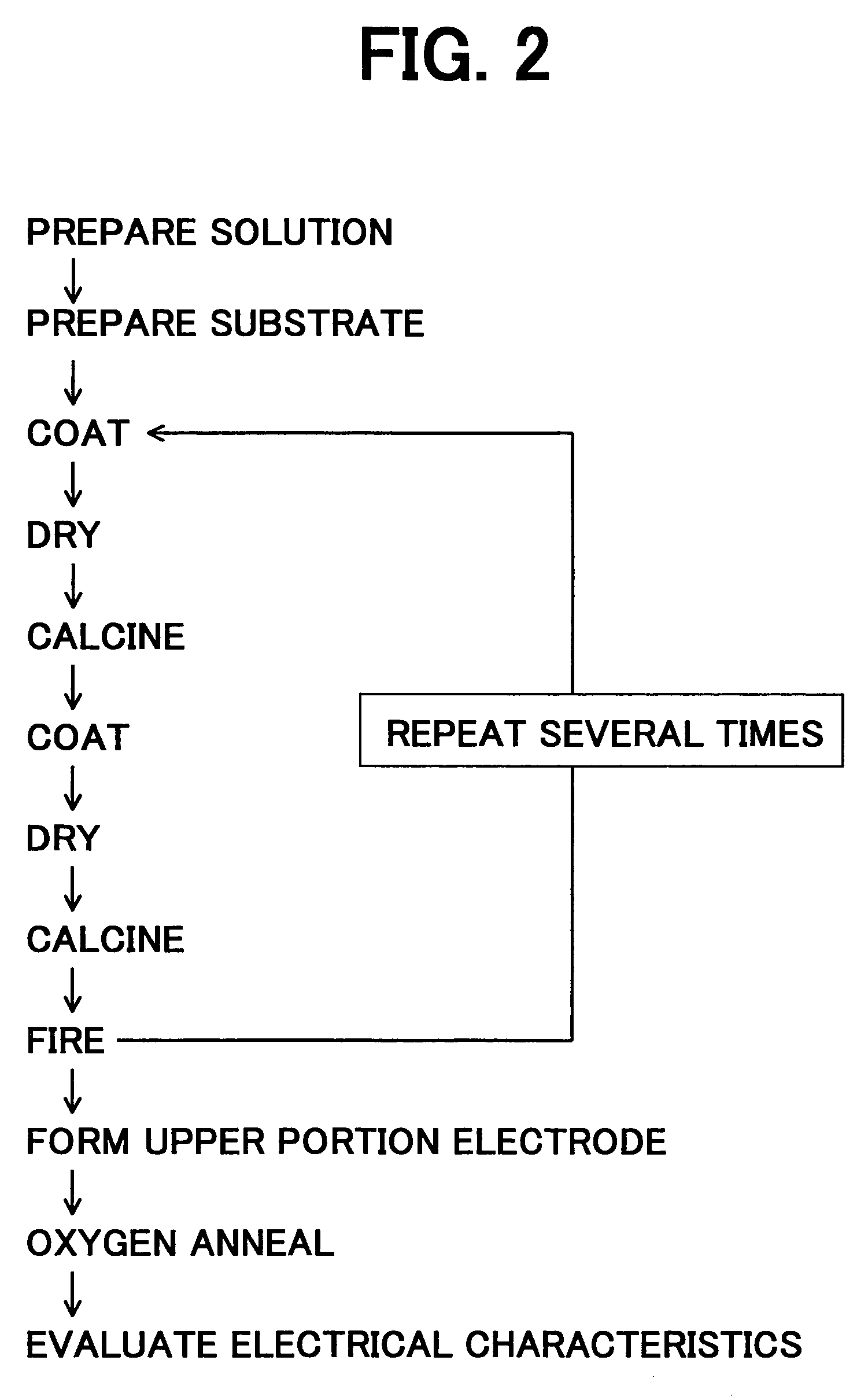Thin film capacitor element composition, high permittivity insulation film, thin film capacitor element, thin film multilayer capacitor, and method of production of thin film capacitor element
a technology capacitor elements, applied in the direction of fixed capacitors, thin/thick film capacitors, ceramics, etc., can solve the problems of obstructing the realization of ultra-high integrated circuits, delay in reducing the size of thin film capacitors, slow film reduction, etc., to achieve superior frequency characteristic, bias characteristic, and c-axis orientation high, the effect of improving the quality of the capacitor
- Summary
- Abstract
- Description
- Claims
- Application Information
AI Technical Summary
Benefits of technology
Problems solved by technology
Method used
Image
Examples
first embodiment
[0083]In this embodiment, as the thin film capacitor element, a thin film capacitor forming a dielectric thin film by a single layer will be used as an example for the explanation.
[0084]As shown in FIG. 1A and FIG. 1B, the thin film capacitor 2 according to an embodiment of the present invention has a substrate 4 and a lower portion electrode thin film 6 over this substrate 4 through an insulation layer 5. The lower portion electrode thin film 6 is formed over it with a dielectric thin film 8. The dielectric thin film 8 is formed over it with an upper portion electrode thin film 10. Note that in this embodiment, an insulation layer 5 is preferably formed over the substrate 4, but there is no absolute need to form the insulation layer 5. For example, the substrate 4 may have the lower portion electrode thin film 6 directly formed over it.
[0085]The substrate 4 and insulation layer 5 are not particularly limited, but are comprised of a good lattice matching single crystal (for example,...
second embodiment
[0125]In the present embodiment, as the thin film capacitor element, a thin film multilayer capacitor formed with multiple layers of dielectric thin film is explained as an example.
[0126]As shown in FIG. 3, the thin film multilayer capacitor 20 according to an embodiment of the present invention has a capacitor body 22. The capacitor body 22 is comprised of a substrate 4a on which a dielectric thin film 8a and internal electrode thin films 24, 26 are alternately stacked in a plurality of layers and further formed with a protective layer 30 so as to cover the dielectric thin film 8a positioned at the outermost part thereby forming a multilayer structure. The capacitor body 22 is formed at its two ends with a pair of external electrodes 28 and 29. The pair of external electrodes 28, 29 are electrically connected to the exposed end faces of the internal electrode thin films 24, 26 alternately arranged inside the capacitor body 22 to form a capacitor circuit. The capacitor body 22 is no...
example 1
[0134]As shown in FIG. 2, first, the stock solutions for forming the dielectric thin film 8 shown in FIG. 1A were prepared. In this example, the solutions shown below were prepared for making the dielectric thin film 8 a bismuth layered compound expressed by the stoichiochemical formula Bi4−xLaxTi3O12.
[0135]First, bismuth 2-ethylhexanoate in a 2-ethylhexanoic acid solution and titanium 2-ethylhexanoate and lanthanum 2-ethylhexanoate in a toluene solution were prepared.
[0136]Next, the bismuth 2-ethylhexanoate in an amount of 4−x moles, the titanium 2-ethylhexanoate in an amount of 3 moles, and the lanthanum 2-ethylhexanoate in an amount of x (x=0, 1.0, 1.1, 1.25, 1.5, and 2.0) moles were mixed to obtain several types of mixed solutions. Note that bismuth 2-ethylhexanoate was added in 10 to 20 mol % excess with respect to the amount of moles when using the stoichiochemical ratio for mixture.
[0137]Next, the mixed solutions were diluted by toluene to, converted to Bi4−xLaxTi3O12, 0.1 mo...
PUM
| Property | Measurement | Unit |
|---|---|---|
| thickness | aaaaa | aaaaa |
| temperature | aaaaa | aaaaa |
| temperature | aaaaa | aaaaa |
Abstract
Description
Claims
Application Information
 Login to View More
Login to View More - R&D
- Intellectual Property
- Life Sciences
- Materials
- Tech Scout
- Unparalleled Data Quality
- Higher Quality Content
- 60% Fewer Hallucinations
Browse by: Latest US Patents, China's latest patents, Technical Efficacy Thesaurus, Application Domain, Technology Topic, Popular Technical Reports.
© 2025 PatSnap. All rights reserved.Legal|Privacy policy|Modern Slavery Act Transparency Statement|Sitemap|About US| Contact US: help@patsnap.com



